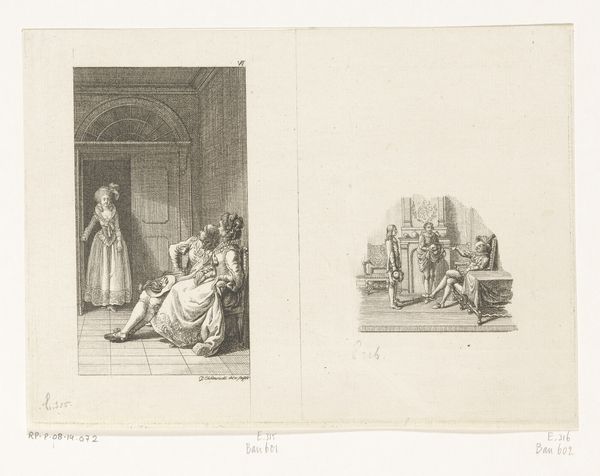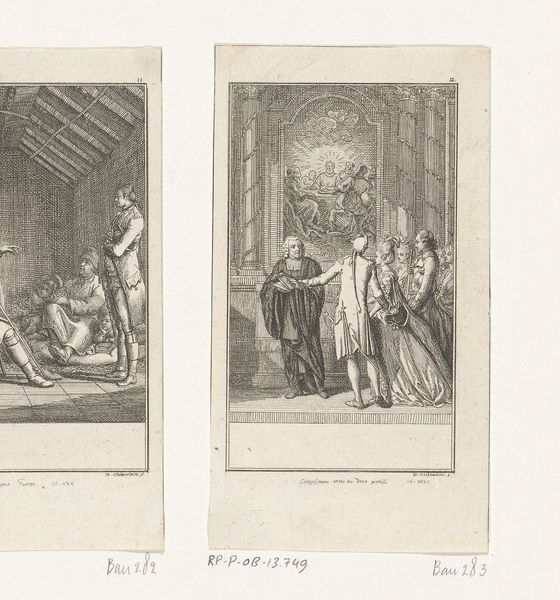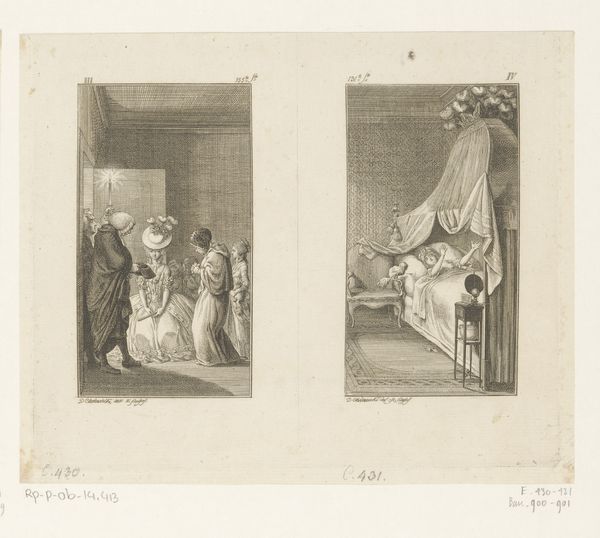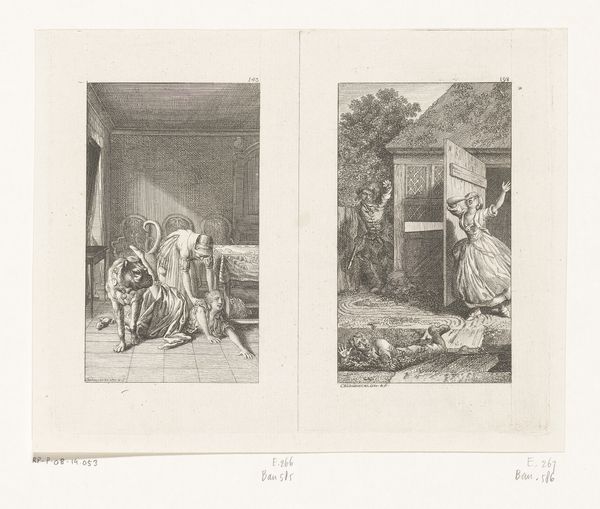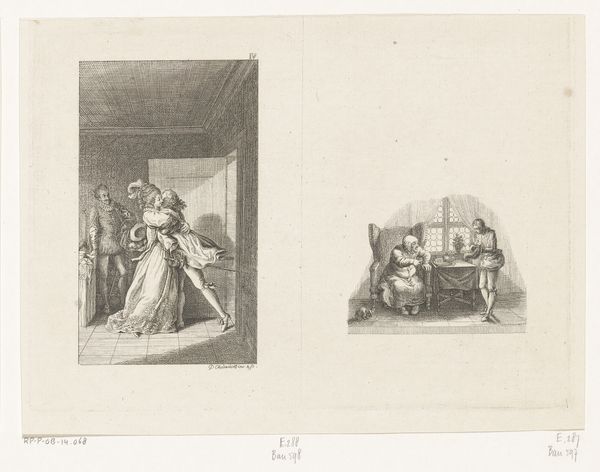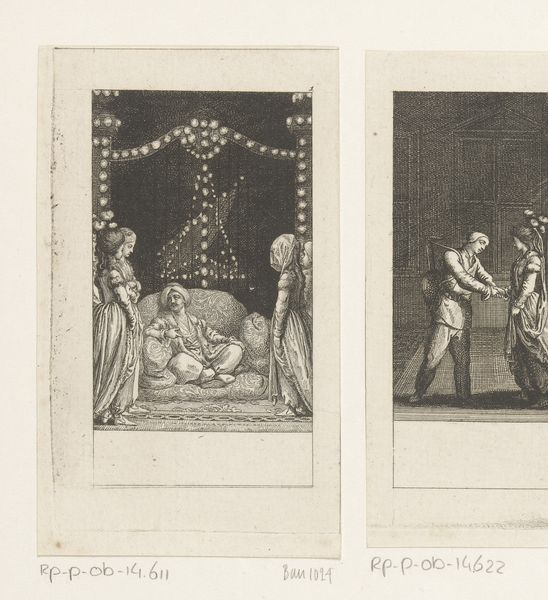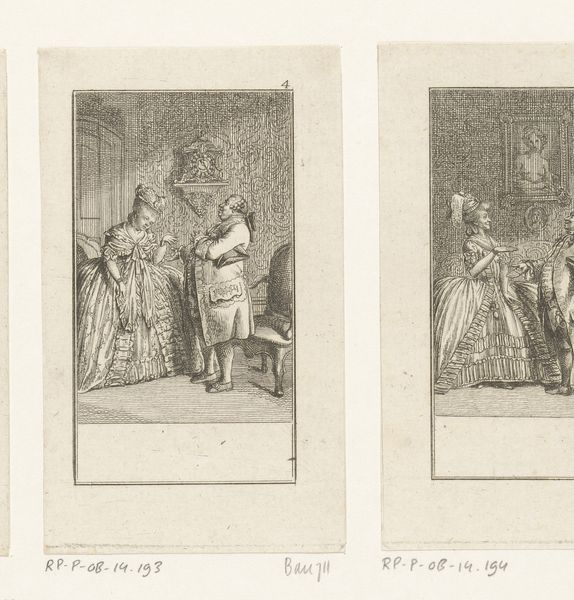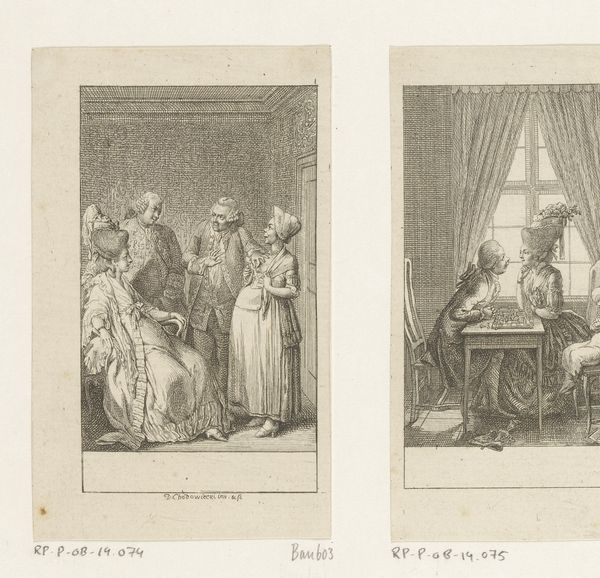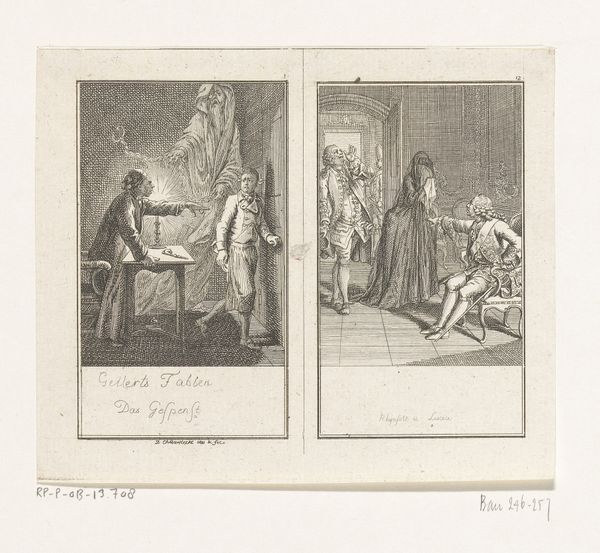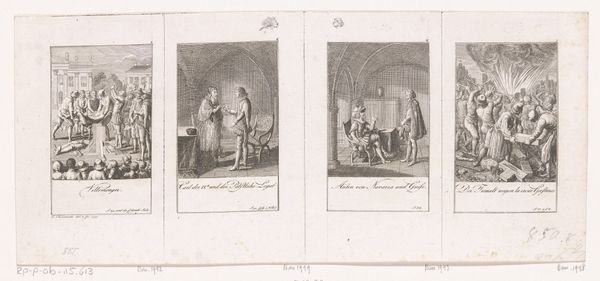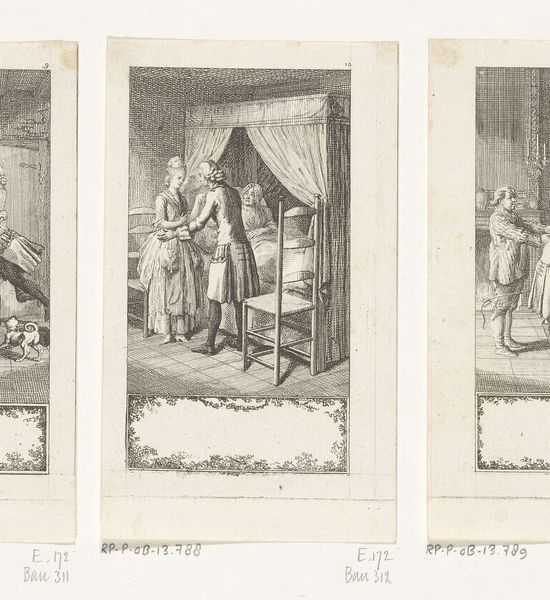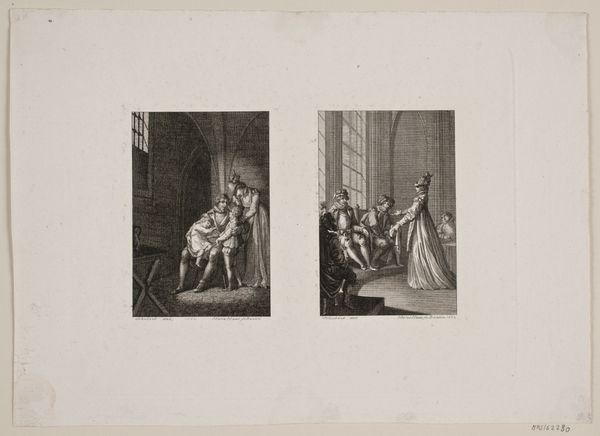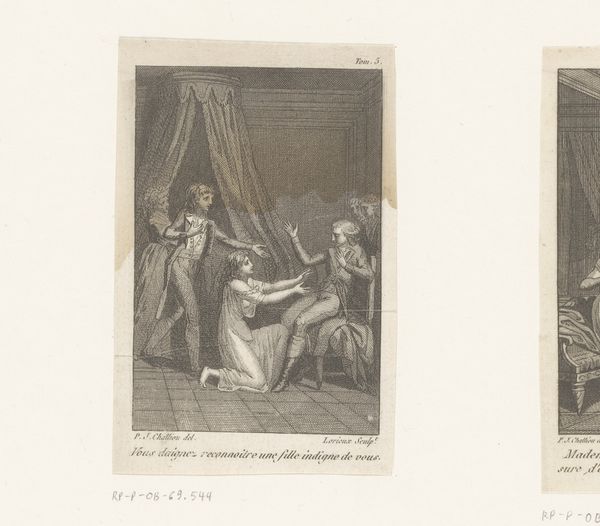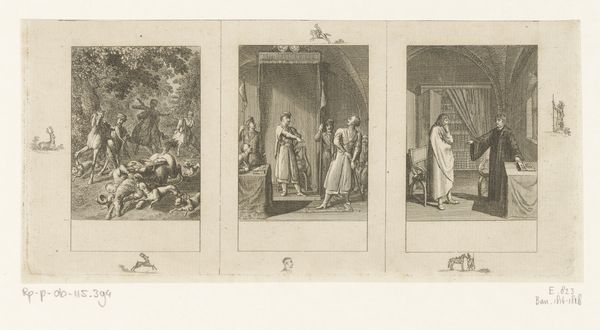
Twee voorstellingen uit Clarissa van Samuel Richardson 1796
0:00
0:00
print, paper, engraving
# print
#
old engraving style
#
paper
#
genre-painting
#
history-painting
#
engraving
Dimensions: height 168 mm, width 209 mm
Copyright: Rijks Museum: Open Domain
Editor: We're looking at "Two Scenes from Clarissa by Samuel Richardson," an engraving done in 1796 by Daniel Nikolaus Chodowiecki. It's quite small, printed on paper. It seems to depict tense domestic dramas. What do you see in these paired scenes? Art Historian: Well, it’s impossible to divorce this image from its literary source, Richardson's novel "Clarissa." The novel itself was a cultural phenomenon. To understand Chodowiecki's print, we have to consider the public's engagement with "Clarissa." This wasn’t just art for art’s sake, it's a visualization of popular morality tales for a burgeoning reading public. What do you notice about how the narrative is presented visually? Editor: It’s split into two distinct scenes within one frame, like comic book panels, almost. The one on the left depicts what seems to be a plea of some kind and the one on the right looks much more dire. I suppose they represent different points in the narrative. Art Historian: Exactly. The engraving isn’t simply illustrating the story; it’s interpreting it for an audience already familiar with the characters and plot. Consider the engraving's distribution. How does making a story visually accessible in print shape its broader cultural impact, compared to the experience of reading the novel itself? Editor: I guess having these dramatic moments captured in visual form solidifies the emotional impact and perhaps simplifies the narrative for those less literate or those wanting a quick reminder of the story's key scenes. Did these prints function as some kind of promotional material or collectables related to the book? Art Historian: Yes, that's a strong possibility. Think about the market for illustrated books and single-sheet engravings at the time. They were circulated, collected, and displayed. They functioned as conversation pieces and moral guides within domestic spaces. Also the level of engraving indicates it was intended for those wealthy enough to collect prints. These kinds of images helped shape how people understood virtue, vice, and the consequences of one's actions in society. I hadn't really considered it so explicitly but there definitely is an audience engagement, and it shifts it away from high art as well.
Comments
No comments
Be the first to comment and join the conversation on the ultimate creative platform.
